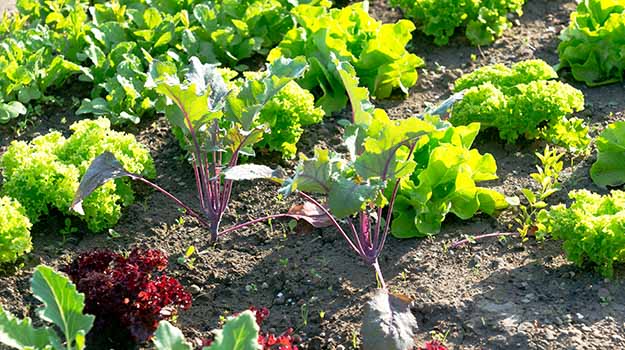
Today, companion planting is making a comeback, in part due to the demand for organic produce. In addition to conditioning soil, maximizing garden space and increasing the overall harvest, companion plants can repel pests or encourage beneficial insects.
List of companion plants
- Planting basil next to tomatoes, peppers and other herbs not only improves their flavor but also repels flies and mosquito pests.
- Cabbage butterflies attack members of the cabbage family, laying eggs in the plants on which the larvae feed. These insects are repelled by the scent of celery, so planting cabbage near this plant helps protect them.
- Bush beans seem to repel the Colorado potato beetle, which loves to feed on eggplant, making beans and eggplants good friends.
- Growing horseradish alongside potatoes is said to make potatoes more resistant to diseases.
- Strawberries seem to enjoy the company of leeks, and the strong odor of the leeks repels many pests of the berries.
- Garlic is said to repel aphids when planted with roses. This herb also makes good companions with a number of other vegetables too for its odor repelling properties that most pests avoid.
Companion gardening has existed for thousands of years
This gardening practice dates back thousands of years. The Native Americans used companion planting and referred to it as the “Three Sisters” in which winter squash, beans, and maize were grown together. The beans fixed nitrogen into the soil, the maize acted as a natural trellis for the beans, and the squash’s large leaves shielded the roots of the other two and kept them cool.
This form of polyculture has been utilized for centuries not only amongst Native Americans, but amongst Chinese farmers too. For example, they have long since used mosquito ferns as companion plants for rice crops. Why? The ferns harbor cyanobacterium, which fixes nitrogen into the soil, and the plants also shade the paddy edges, thwarting the growth of any competing plants.
Companion planting promotes a diverse garden more akin to nature. More diverse crops prevent the passing of diseases and pests. So practicing companion planting allows the gardener to dispense with the use of chemicals and leads towards a healthier garden environment and a healthier you.


